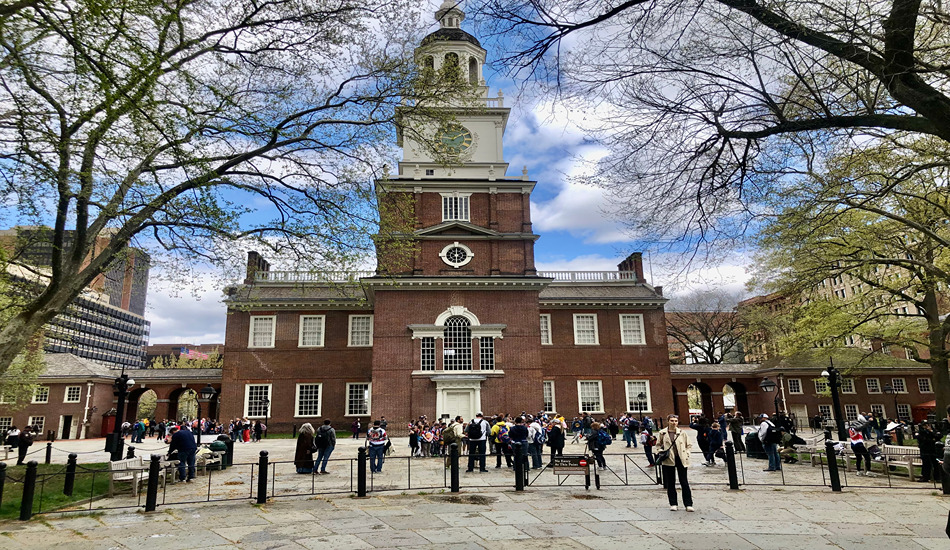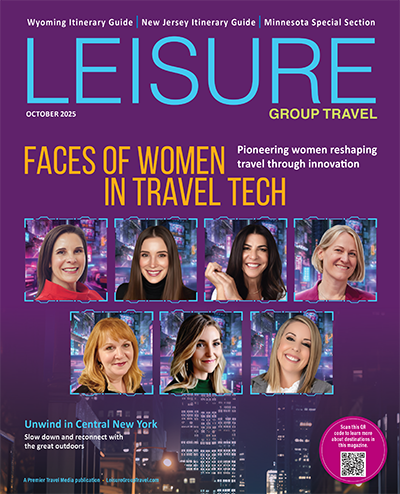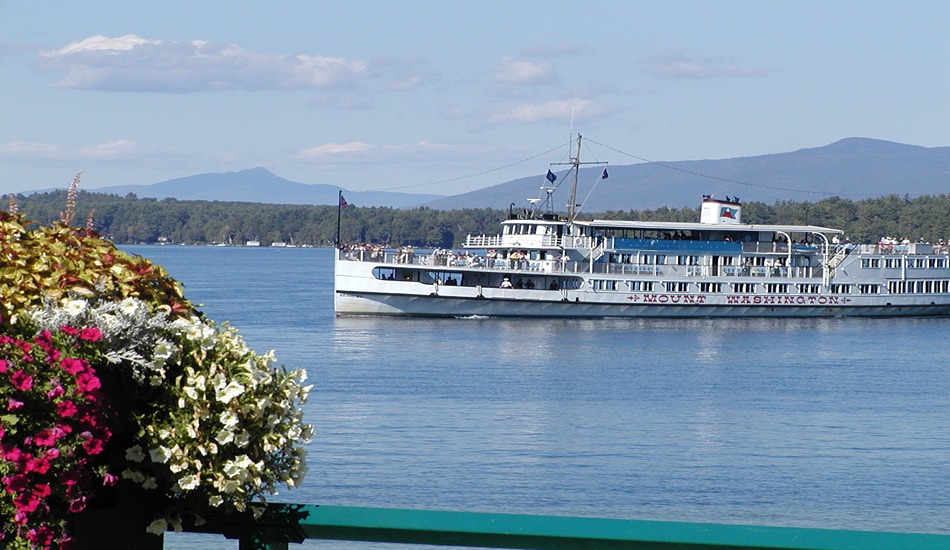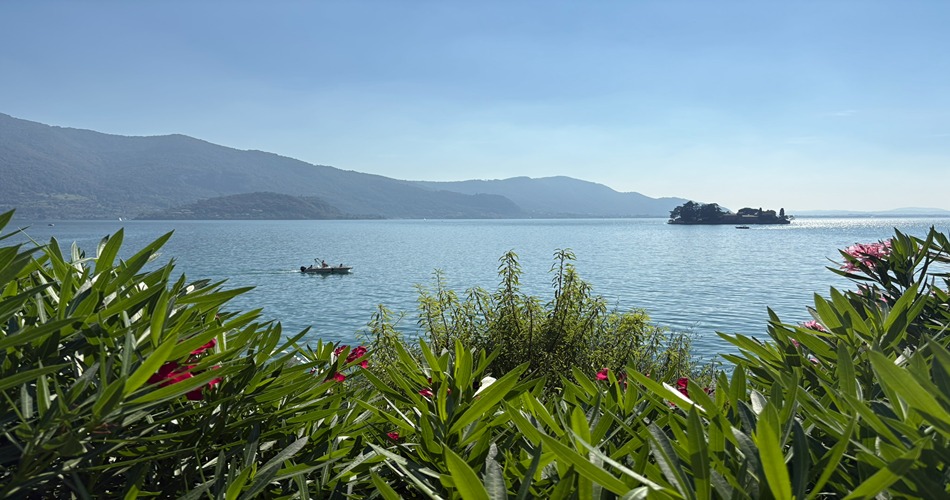Bursting with reminders of America’s past, Philadelphia beckons history buffs with both iconic crowd-pleasers and off-the-radar gems like the Masonic Temple.
As one of the oldest cities in America, Philadelphia overflows with sites that enthrall history lovers. Most famous are the ones clustered in and around Independence National Historical Park in the Old City. The vicinity is known as America’s most historic square mile.
For fans of American political, cultural and economic history, here are 10 of Philadelphia’s top attractions:
Independence Hall: Birthplace of a Nation
The United States was officially born inside the walls of this classic Georgian brick building, which began life in the 1730s as the Pennsylvania State House. A must-see for all Americans, it is the centerpiece of Independence National Historical Park. Free tours are on a timed-entry basis, and slots fill up quickly.
The first-floor Assembly Room, simply furnished with tables and chairs, is where patriots like George Washington, Benjamin Franklin, James Madison and Thomas Jefferson, debated, drafted and signed the Declaration of Independence in 1776 and Constitution in 1787. Original copies of the documents are on display in the Great Essentials Exhibit in the building’s west wing.
The furniture in Independence Hall is largely reproduction as most of the original pieces were burned when Philadelphia was briefly occupied by the British Army in the winter of 1777-1778. Washington’s famous “Rising Sun” chair, made in 1779, survives.
Flanking Independence Hall are Old City Hall, which housed the U.S. Supreme Court from 1791 to 1800, and Congress Hall, where the U.S. Congress met from 1790 to 1800. Both buildings are open to the public.
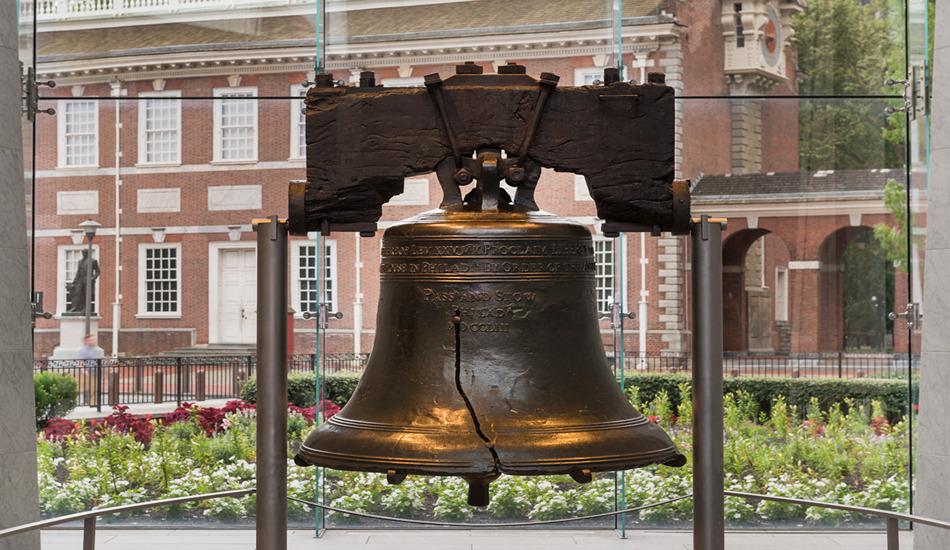
The Liberty Bell is a Philadelphia must-see. (NPS Photo)
Liberty Bell Center: A Shrine to Freedom
Famous for its irreparable crack, the Liberty Bell resides in a glass-fronted building across from Independence Hall. Visitors pass by the iconic symbol of our democracy under the watchful eyes of National Park Service rangers. A mini-museum hosts exhibits and a short History Channel film.
Manufactured in England, the 2,080-pound bell was first rung from the tower of Independence Hall in 1753 and purportedly rang out at the first public reading of the Declaration of Independence in 1776.
Engraved on the bell are these words from the Old Testament’s Book of Leviticus: “Proclaim Liberty throughout All the land unto All the Inhabitants Thereof.” It got the name Liberty Bell in the 1830s from anti-slavery groups who saw that message.
The following five attractions are within easy walking distance of Independence Hall and the Liberty Bell, in an area commonly known as Independence Mall:
Weitzman National Museum of American Jewish History
This free-admission Smithsonian Institution affiliate focuses on the Jewish experience in America, from colonial days to the present. Filled with artifacts and large-screen videos, it covers subjects like mass migration from Eastern Europe in the early 20th century, the garment industry and labor movement, World War II and the Holocaust, and Jews as anti-war and civil rights activists. The “Judaism in Suburbia” exhibit describes the post-war flight to the suburbs and pursuit of leisure, featuring a walk-through 1950s house.
Three films highlight Jewish influence—on screen, on stage and behind the scenes—on the entertainment industry’s early days, with clips of performers like Al Jolson, Fanny Brice, the Marx Brothers and Three Stooges.
The lobby-level Hall of Fame recognizes Jews who have made significant contributions to American society. Behind glass is a piano owned by Irving Berlin and a manuscript of “God Bless America,” all royalties of which were donated to the Boy and Girl Scouts of America.
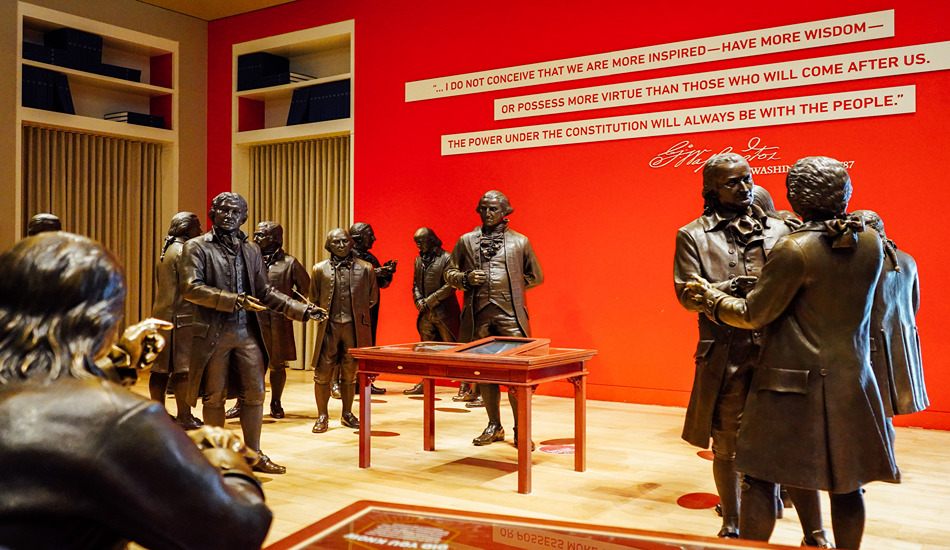
Signers’ Hall at the National Constitution Center in Philadelphia features life-size statues of men at the signing of the Constitution in 1787. (Photo credit: K. Huff/Philadelphia CVB)
National Constitution Center Shines Light on American Principles
Filled with high-tech exhibits, this attraction across from the Independence Visitor Center brings to life our country’s guiding document. Boldly inscribed on the two-story building’s facade are the first three words of the Constitution, “We the People.”
In a bowl-shaped theater with wraparound video walls, a 20-minute performance of “Freedom Rising” sets the stage for the museum experience. A live narrator and dramatic voiceovers, along with lights, inspirational symphonic music and a multimedia display of images, tell the story of the U.S. Constitution, which provides the framework for the ideals expressed in the Declaration of Independence. On display is a rare, original copy of the first public printing of the Constitution, published in a newspaper two days after the signing.
In Signers’ Hall you can mingle with 42 life-size bronze statues of the Founding Fathers present at the Constitution’s signing on September 1, 1787. Pose for a selfie with patriots like George Washington, Alexander Hamilton, James Madison and Benjamin Franklin. Each figure is based on extensive historical research, including details gleaned from portraits, written descriptions and even measurements of the delegates’ clothing.
On touchscreens at the circular American National Tree, choose the face of a famous (or lesser-known) person and learn how they fought for or exercised a right spelled out in the Constitution. Each story exemplifies tolerance, diversity and opportunity. Faces include civil rights leaders like Booker T. Washington, Jackie Robinson and John Lewis.
At one computer station you can pick up the phone and listen to a man and woman debate the issue of immigration. In the First Amendment room, watch a video of Supreme Court Justice Elena Kagan discuss flag burning.
Who knew that civics lessons could be so engaging.
Museum of the American Revolution Embodies the Spirit of ’76
Through films, rare relics and interactive exhibits, guests get the whole story of the Revolutionary War, from the Boston Tea Party to final victory at the Battle of Yorktown. The 15-minute film Revolution provides excellent orientation on events that led to the birth of a nation.
One theater shows Washington’s War Tent, a moving and immersive 12-minute film that tells the story of the tent General George Washington used as his command headquarters as his Continental Army moved from place to place. The presentation ends with the actual tent, the crown jewel of the museum’s collection, dramatically appearing on stage.
Banners of Liberty: An Exhibition of Original Revolutionary War Flags, running from April 19 to August 10, 2025, will mark the 250th anniversary of the beginning of the Revolutionary War. Working with institutional and private lenders, the museum will display more than a dozen flags that were carried in military campaigns stretching from northern New England to South Carolina.

This portrait of Martha Washington, wife of George Washington, hangs in the portrait gallery in the Second Bank of the United States. It was executed by Charles Willson Peale in 1795.
Second Bank of the United States: Art Gallery Extraordinaire
If you’ve ever wanted to see what our Founding Fathers looked like, this is a good place to start. Patterned after the Parthenon, the stately 1824 Greek Revival building houses the portrait gallery People of Independence. Admission is free.
The collection of over 150 paintings from the late 18th and early 19th century holds portraits of colonial and federal leaders, military officers and other historical figures, including George and Martha Washington, James and Dolley Madison, Alexander Hamilton, Thomas Jefferson, the Marquis del Lafayette and explorers Lewis & Clark. Many of the works are by Charles Willson Peale (1741-1827), whose Philadelphia museum, the first public museum in America, displayed his portraits.
United States Mint: Money, Money, Money
Chances are that some of the coins in your pocket or purse were made at the U.S. Mint in Philadelphia, the largest coin factory in the world. In addition to pennies, nickels, dimes and quarters, this facility on Independence Mall turns out commemorative coins and Congressional Gold Medals. Admission is free.
On a self-guided tour, visitors see trays of coins on conveyors from viewing windows 40 feet above the factory floor. Videos and interactive displays explain the history of coin-making and the manufacturing process. The coins are shipped to Federal Reserve Banks across the nation and from there they go to local banks. (As production schedules vary, coins may not be in production on the day of your visit.)
Displayed on lobby walls are seven glass mosaic panels originally commissioned to celebrate the opening of the third United States Mint building in Philadelphia in 1901. The mosaics, designed and created by the famous Tiffany Studios of New York City, show cherubic children illustrating coin making in ancient Rome.
The current Mint opened in 1969 as the fourth in Philadelphia. An agency of the U.S. Department of the Treasury, the Mint operates six facilities across the nation, including the headquarters in Washington, D.C.; United States Bullion Depository at Fort Knox, KY; and coin production facilities in Denver, San Francisco and West Point, NY.
The Mint’s gift shop sells coin jewelry and money clips, sets of coins in mint condition and coin books for collectors (numismatists), along with T-shirts, games and other souvenirs. A photo machine lets you put yourself on a coin, and vending machines dispense the latest coins in the American Women Quarters Program. In 2025, the last year of the four-year program, honorees are Juliette Gordon Low, Ida B. Wells, Althea Gibson, Dr. Vera Rubin and Stacey Park Milbern.
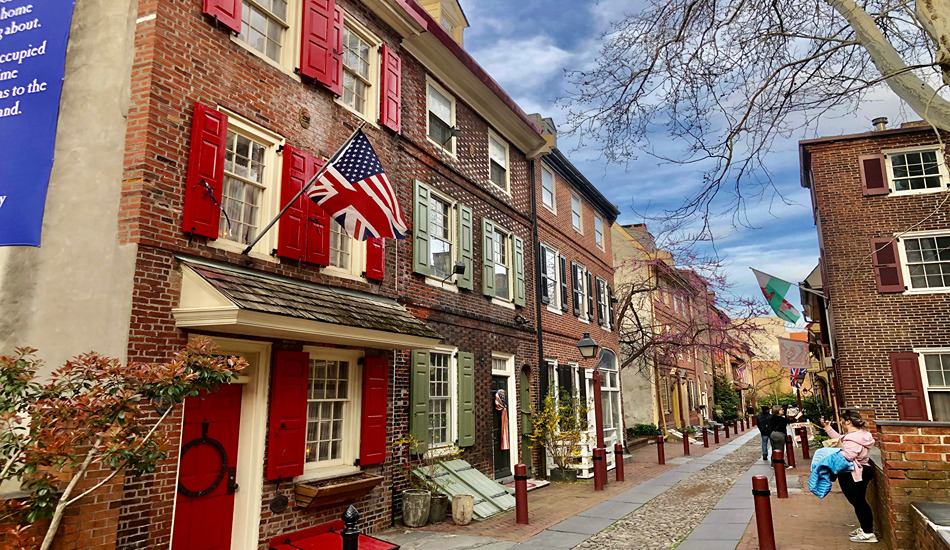
Elfreth’s Alley, a well-preserved piece of Philadelphia’s Old City. (Randy Mink Photo)
Elfreth’s Alley: A Walk Back in Time
Soak in the colonial ambience of Philadelphia’s Old City by taking a stroll down the country’s oldest continuously occupied residential street, a few blocks east of Independence Mall. Lined with two- and three-story brick rowhouses, the block-long cobblestone lane dates back to 1702.
The oldest homes were built between 1724 and 1728. Elfreth’s Alley Museum includes the quaint former homes of a colonial dressmaker and chair maker.
It’s worth an excursion from the Old City to see the next two Philadelphia attractions.
Eastern State Penitentiary: Prison Ruin Preserved
Both haunting and enlightening, this National Historic Landmark in the Fairmount neighborhood provides a fascinating look at life behind bars. Constructed in 1829 and closed for good in 1971, the grand, castle-like building has been restored in some places, but visitors in the cell blocks’ long vaulted corridors will see plenty of rubble, peeling paint and chipped plaster. It’s termed a “stabilized ruin.”
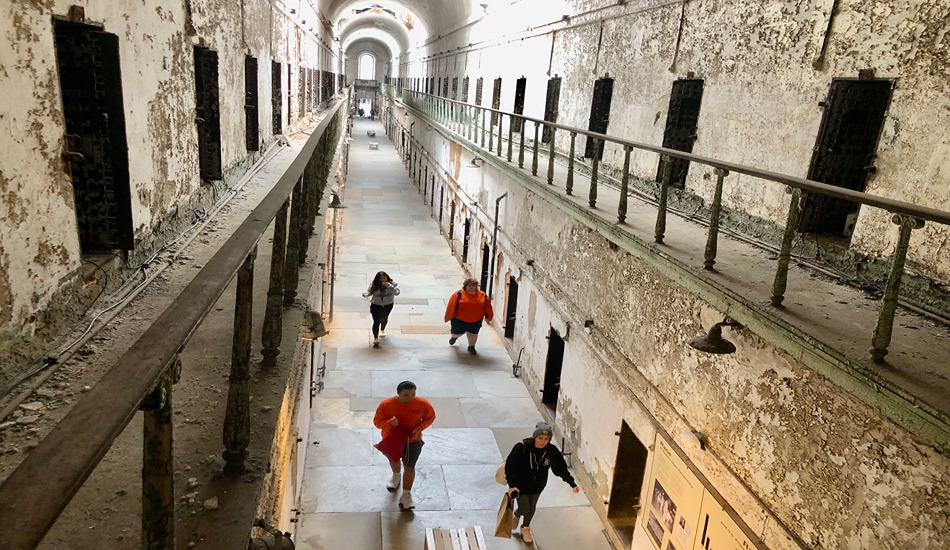
Eastern State Penitentiary. (Randy Mink Photo)
After being abandoned for more than 20 years, Eastern State opened for tours in 1994. “Voices of Eastern State,” a self-guided audio tour, takes you through more than 20 sites within the sprawling complex, including the yards, hospital block, synagogue and relatively luxurious cell where gangster Al Capone spent eight months in 1929. Narrated by actor Steve Buscemi, the tour includes commentary by former inmates and guards.
Until 1913, each prisoner was confined to his or her own cell for 23 hours a day. They were not allowed to speak to other prisoners and were hooded when outside their cells to prevent interaction with each other. The concept of strict isolation, based on the belief that criminals would become penitent or remorseful, was once a model of reform adopted by prisons around the world. Eastern State’s revolutionary star-shaped floor plan, with seven cell blocks radiating from a central rotunda, also was copied by other prisons.
Exhibits on the current state of incarceration in the United States spotlight prison reform efforts, racial disparities and other criminal justice issues.
The Masonic Temple is an Eye-Opener
A magnificent work of art and architecture dedicated in 1873, the home of the Grand Lodge of the Free and Accepted Masons of Pennsylvania is somewhat of a hidden treasure, despite being right in the middle of downtown Philadelphia, across the street from City Hall.
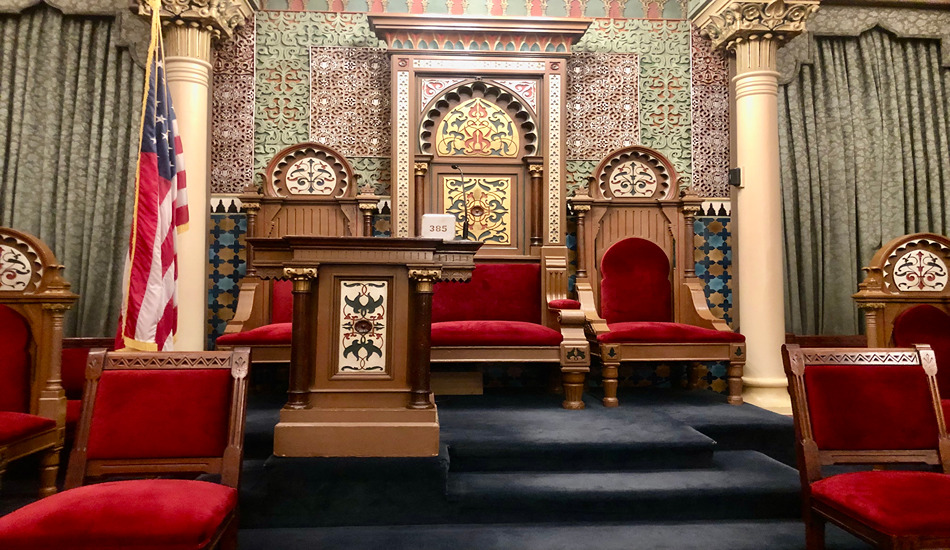
Oriental Hall, reminiscent of Spain’s Alhambra Palace, is one of seven spectacularly decorated meeting rooms at The Masonic Temple in downtown Philadelphia. (Randy Mink Photo)
Guided tours of The Masonic Temple shed a glimmer of light on the Freemasons, the world’s oldest, most mysterious fraternal order, and provide looks at seven lavishly decorated meeting rooms exemplifying various architectural styles; some of the grand chambers are three or four stories high. The Egyptian Hall, with its accurate hieroglyphics, is perhaps the most famous. The Oriental Hall replicates parts of the Alhambra in Granada, Spain.
Many of America’s early leaders, including 13 signers of the Constitution and 14 U.S. presidents, were Masons. Most prominent among them were George Washington and Benjamin Franklin, who are depicted together in a statue outside. The temple’s museum displays Washington’s Masonic apron and Franklin’s sash.
Travel smarter, plan better – Get top destinations, itineraries, and industry trends by subscribing to Leisure Group Travel now.
By Randy Mink, Senior Editor
Lead Photo – Independence Hall. (Randy Mink Photo)


